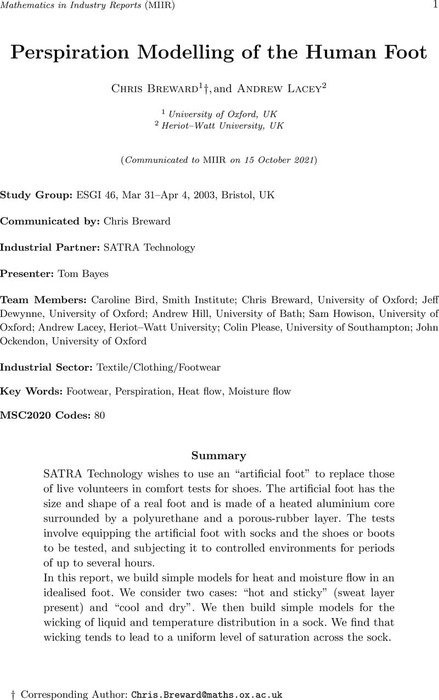Abstract
SATRA Technology wishes to use an “artificial foot” to replace those of live volunteers in comfort tests for shoes. The artificial foot has the size and shape of a real foot and is made of a heated aluminium core surrounded by a polyurethane and a porous-rubber layer. The tests involve equipping the artificial foot with socks and the shoes or boots to be tested, and subjecting it to controlled environments for periods of up to several hours. In this report, we build simple models for heat and moisture flow in an idealised foot. We consider two cases: “hot and sticky” (sweat layer present) and “cool and dry”. We then build simple models for the wicking of liquid and temperature distribution in a sock. We find that wicking tends to lead to a uniform level of saturation across the sock.
Content






